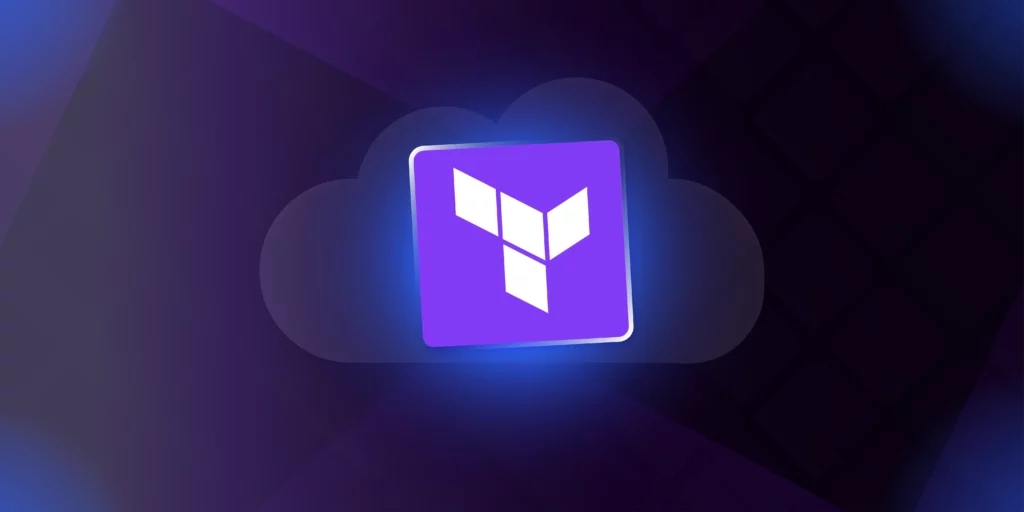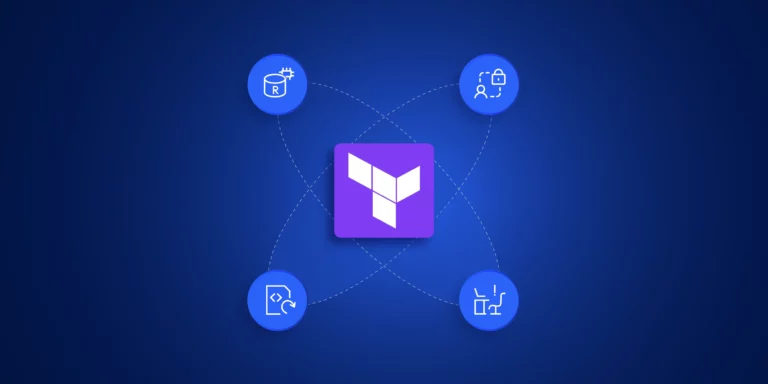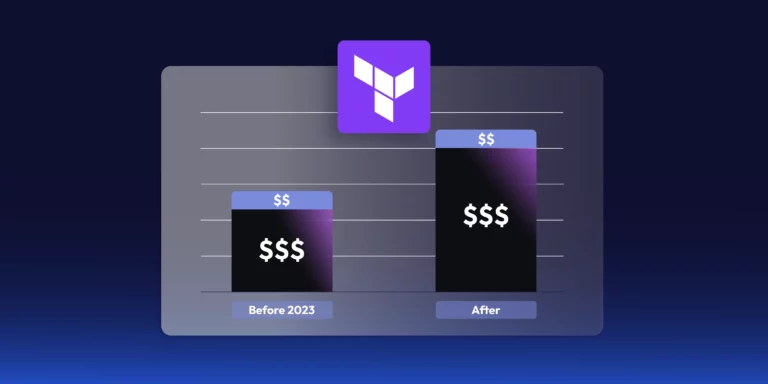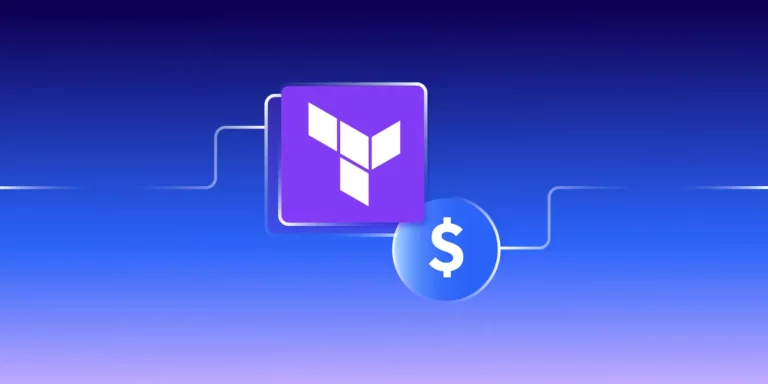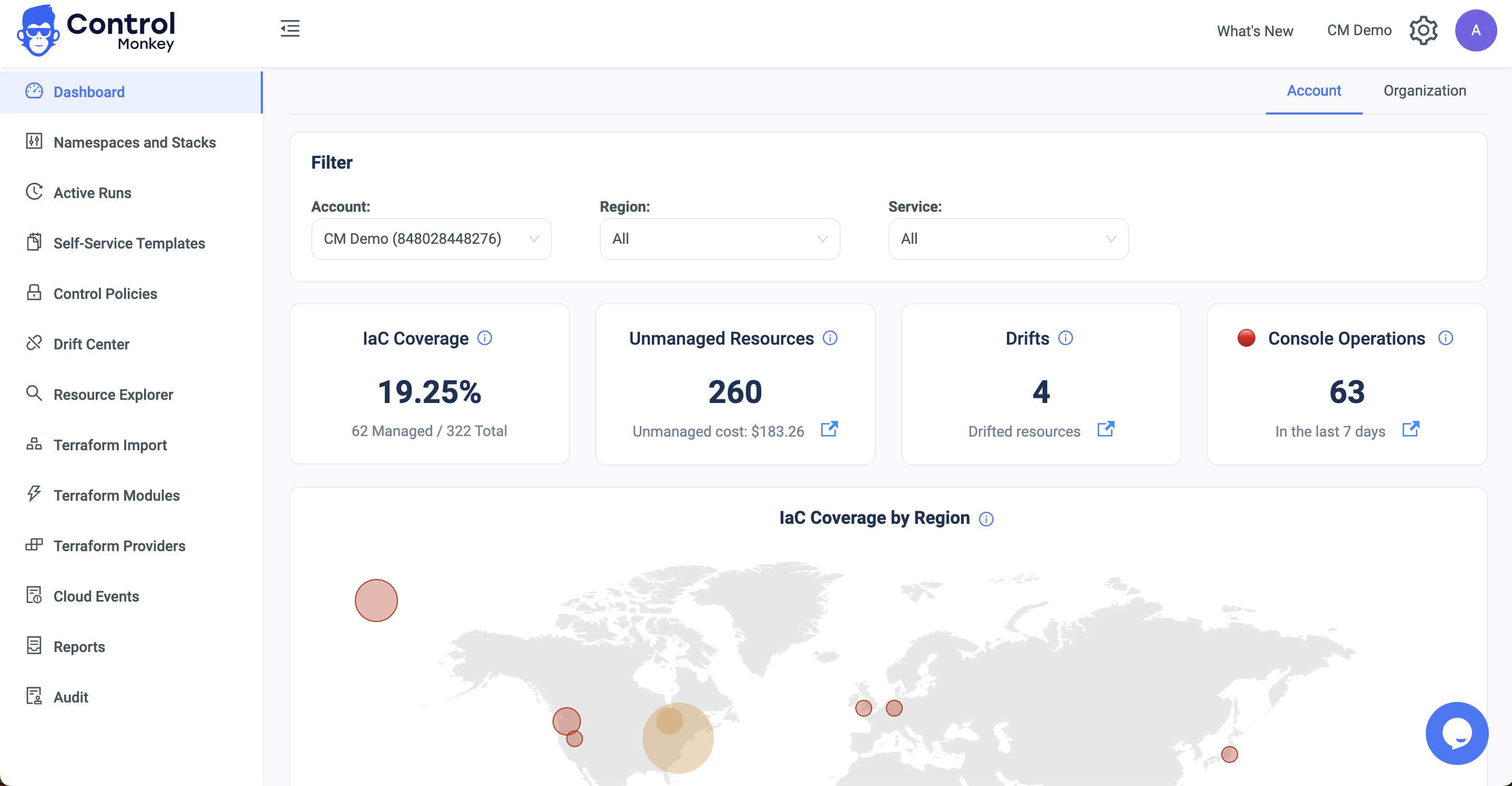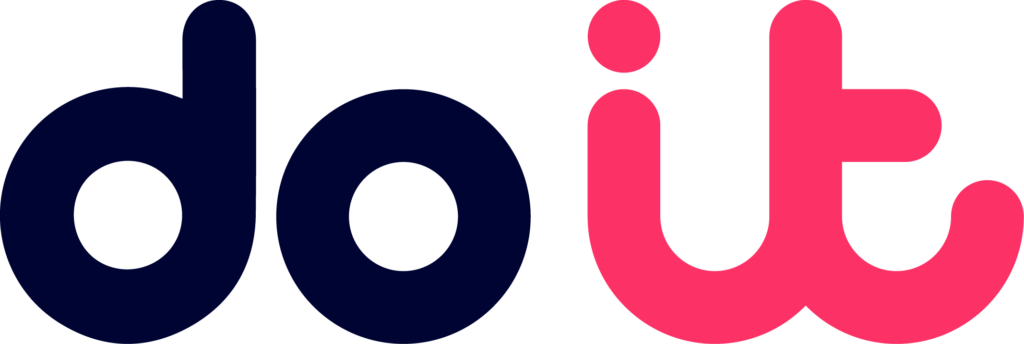Terraform Cloud (TFC) is a platform designed to simplify handling infrastructure-as-code (IaC) workflows. It facilitates teams in automating and handling cloud infrastructure efficiently, adding extra functionality beyond the Terraform open-source solution. It simplifies collaboration on IaC projects, maintaining compliance, implementing version control system (VCS) integrations, and managing remote states.
Disclaimer:
ControlMonkey is a Terraform Cloud Alternative.
If you’re interested in comparing the two, click here to discover what sets ControlMonkey apart as a strong alternative to Terraform Cloud.
📚 More on Terraform Cloud:
-
Terraform Cloud Pricing Guide: Tiers, Costs, and Optimization Tips
-
Terraform License Change: Impacting IaC Teams in 2025
- OpenTofu vs Terraform: IaC Comparison for DevOps Teams
Core Features of Terraform Cloud
Terraform Cloud enhances the open-source Terraform tool by adding several features listed below:
Remote State Management
Terraform Cloud stores your infrastructure’s state remotely so multiple teams can work together on provisioning without conflicts. The remote state keeps your infrastructure in sync at all times, reduces state file conflict risk, and allows for easy-to-manage infrastructure changes.
Terraform Cloud VCS Integration
Terraform Cloud natively supports integration with Version Control Systems (VCS) like GitHub, GitLab, and Bitbucket. These integrations support the management of infrastructure changes through Pull Requests/Merge Requests for testing and to streamline the deployment.
TFC Workspaces
TFC workspaces offer the ability for multiple teams to collaborate on multiple environments (production, staging, development) under one organization. Each workspace is specific to one environment and can be configured with its variables, secrets, and state files for adequate isolation and security.
Policies
The compliance of infrastructure with best practices and standards is maintained by the built-in policy enforcement. HashiCorp Sentinel support is available within Terraform Cloud so that customers can write and maintain their customized policies for resource configurations, access controls, etc.
Automation
Terraform Cloud automates many manual tasks, like terraform planning and applying, reducing human error risk. Automated tasks can provide standardized infrastructure provisioning, upgrades, and maintenance.
Terraform Cloud Benefits
TFC provides many benefits, from secure remote state storage to built-in policy enforcement, empowering teams to scale infrastructure with confidence.
Remote State Data and Operations
Among the most impactful TFC benefits is its remote state storage, which ensures teams can securely manage infrastructure across environments. Terraform Cloud or Enterprise also executes remote command line operations to centralize Terraform Run workflows and provide a historical view of all of the Terraform runs for a given configuration.
VCS and API Workflow
TFC integrates with the most popular version control systems in addition to the command line operations. So, as your organization is starting to support additional get-up patterns where you’re performing code check-ins and commits, those now will trigger Terraform runs. Terraform also has a full API for more complicated workflows.
Sentinel Policy-as-Code/Terraform Cloud or Enterprise Governance
The Sentinel policy-as-code engine plays a central role in Terraform Cloud governance, enabling teams to enforce compliance with internal and external policies. For example, you can check to ensure all the resources are tagged properly or encryption can be set on your object store, limiting what cloud regions your infrastructure can be deployed to.
Drift Detection
Terraform Cloud can also handle drift detection. It has built-in continuous checks that allow it to preemptively detect changes made outside of Terraform, maybe manual edits or changes by external systems, and then notify and provide alerts when that drift is detected.
Private registry
The private module Registry of TFC allows organizations to write and host their modules so teams can easily consume reusable Terraform Code, much like the public registry, but now in a private fashion.
Role-Based Access
Terraform Cloud also allows organizations to grant role-based access control with granular permissions, giving teams and users the right platform access level.
Terraform Cloud Limitations
TFC or Enterprise provides numerous advantages; however, it also has certain drawbacks that organizations need to consider prior to implementing the platform.
- Pricing: While Terraform OSS is free, Terraform Cloud offers a subscription model that depends on the number of RUM (Resources under management), workspaces, and feature tiers. This can quickly become expensive with the number of resources consumed, as your infrastructure grows over time. It’s important you closely monitor your resources and update your plan accordingly for better ROI.
- Licensing: HashiCorp introduced a significant licensing shift in 2023 from the Mozilla Public License (MPL 2.0) to the Business Source License (BSL). The shift has raised concerns that Terraform is no longer “technically open source,” sparking discussions about community contributions and vendor-neutrality (see The Register coverage).
- No OpenTofu/Terragrunt support: if you’re looking to use other IaC frameworks such as OpenTofu/Terragrunt you cant do it with Terraform Cloud.
- Performance: TFC workspaces tend to become slower as they scale. For example, when a single workspace goes beyond 5 000 managed resources it will have significantly slower “plan and apply” operations and, in some cases, might hit state-locking issues (Best Practices for Workspace Size). In addition, the service imposes hard limits on the number of concurrent runs—one on the Free tier and three on the Standard tier—which can result in delays during
terraform apply(HCP Terraform Limits). - Remote State Lock In: Since Terraform Cloud supports only its own remote backend for state files, switching to another automation alternative would require additional effort.
Terraform Cloud Alternatives
If you have found the limitations of TFC too restrictive, ControlMonkey offers support for both Terraform and OpenTofu.
It combines continuous drift detection with PR-based, one-click drift remediation which means any configuration drifts are detected and fixed within Git automatically.
With ControlMonkey, you can reverse engineer unmanaged cloud resources into clean Terraform code and state files using AI-powered code generation, achieving 100% Infrastructure as Code (IaC) coverage.
It supports custom policy and guardrails with encryption, tagging, and other compliance rules across namespaces or stacks governed.
Find out a detailed comparison on Terraform Cloud Alternatives here.
Conclusion
Terraform Cloud presents a structured solution for IaC workflows but introduces significant trade-offs in control, pricing, and flexibility—especially for teams with mature DevOps pipelines.

FAQ Section
Terraform Cloud has a subscription-based pricing scheme. It is billed according to the users, workspaces, and other aspects of the plan. You can choose free and paid plans based on your needs.
The key distinction in Terraform OSS vs Terraform Cloud lies in collaboration, remote state handling, and governance support. Terraform OSS is ideal for individual or small teams managing infrastructure manually, while Terraform Cloud introduces automation, policy enforcement, and shared workflows.
In 2023, HashiCorp shifted Terraform’s license from MPL to the Business Source License, referred to as the Terraform BSL, which raised concerns about vendor neutrality and commercial limitations. The Terraform BSL restricts certain commercial use cases, especially at enterprise scale, prompting many to explore open alternatives like OpenTofu.
Alternatives such as ControlMonkey offer different features supporting both OpenTofu and Terraform with added flexibility for infrastructure, such as code management, depending on your specific needs.
Terraform Cloud is best suited for teams that need collaboration and governance; it is not the best choice for smaller teams needing tighter budgets or more flexibility and customizability in their workflows.
Terraform Cloud uses a proprietary remote backend, so migrating your state files and automations to another solution requires manual effort or tooling support.
Other market alternatives like ControlMonkey support automatic migration.


